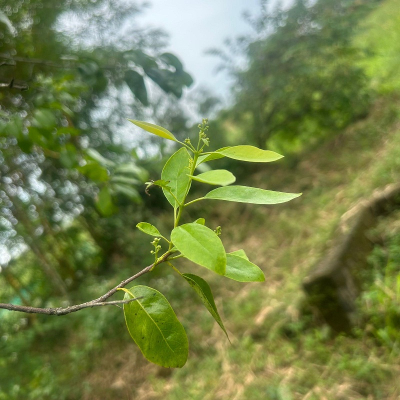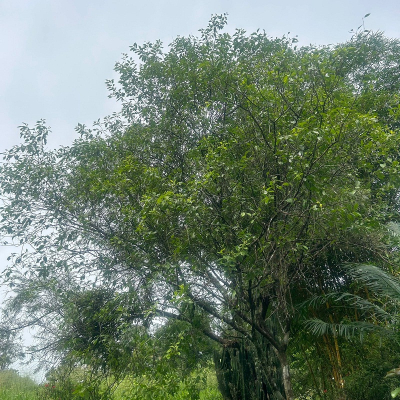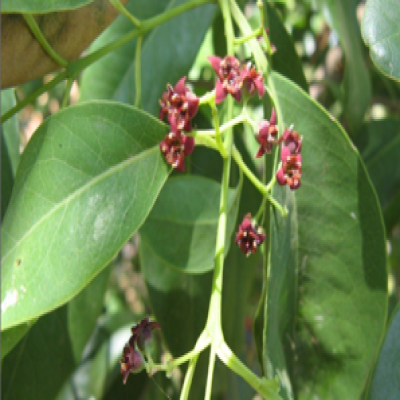Distribution and habitat: Indigenous to the mountain districts of South India and Malayan Archipelago.
Botany: A small to medium-sized, evergreen semi-parasitic tree, with slender branches, sometimes reaching upto 18 m in height and 2.4 m girth. The sapwood is white and odourless while the heart wood is yellowish-brown and strongly scented.
- Leaves: 3.5-4.0 cm, elliptic, lanceolate, glabrous and petiolate;
- Flowers : Inflorescence terminal or axillary, paniculate cyme; flowers bisexual, many, brownish purple; perianth campanulate; stamens 4, exerted, alternating with 4 rounded obtuse scales.
- Fruit: Drupes, globose, 1.25 cm in diameter, purple-black, endocarp hard and ribbed; seeds globose or obovoid. Sandal tree is a plant parasite and its root thrives on many types of host plants such as Cassia siamea, Pongamia pinnata, Lantana acumianata, Cajanus cajan etc.
Chemical constituents: α-and β- santalol, santene, santenol, santanone and tropane alkaloids.
Uses:
- Used in perfumery and in treatment of fever, liver, kidney and bladder affections.
- Sandal oil + neem oil is a contraceptive.
- Also used in healing wounds and blisters caused by the small pox vaccination.
Formulations: Valiya chandanadi thailam, Chandanadi-churna, Chandanasav, sudarsan-churna
Agro technology
Soil and climate: Grows well on laterite soils on the slopes of hills exposed to the sun. Warm tropical climate is the best suited for the tree.
Propagation: Seeds. Seeds can be collected from trees of 20 years old. Seeds have dormancy of 2 months. Seed treatment cane done by rubbing the seeds are rock surface followed by water soaking for 48 hours /soaking in flowing water for 48 hours/ GA 500 ppm. Germination starts in 2 months and may extend upto 6 months. The seedlings are planted in ploybag when it is in 6 leaf stage. A host plant need to be planted in the polybag. 6 month old seedlings are transplanted in the main field.
Planting and aftercare: Sandalwood seedlings along with host seedlings are planted from May to October at 2.5‑4.0 m spacing. If a perennial host is planted along with sandalwood seedling, the growth of sandal increases. Some good hosts are Acacia nilotica, Melia dubia, Cassia siamea, casuarina, wrightia, pongamia etc. It is ideal to plant sandal in alternate rows with host plants. Regeneration of sandalwood is also done successfully by dibbing seeds into bushes in open scrub jungles or by dibbling seeds in pits or mounds. When seedlings are overtopped by host plant, the host is lopped to provide sufficient light to seedlings.
Pests and diseases: Sandal spike disease is caused by mycoplasma-like organisms, which cause severe reduction in leaf in size and shorten internodes.
Harvesting: As roots are the richest in oil, sandal wood tree is harvested by uprooting and not by cutting to avoid loss of root system. In sandalwood, heartwood formation is at its peak when trees are 30‑60 years and attain a girth of 40‑60 cm. It is reported that a 50 year old sandal attains a girth of 55 cm and produces 30 kg heartwood.
Processing: Sandal wood oil is obtained by steam distillation (48 -72 hours) of powdered wood soaked in water.




